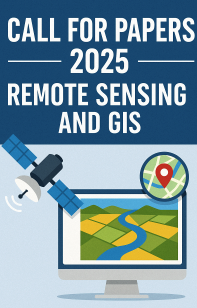Morphometric Analysis and Prioritization of Sub-watersheds for Management of Natural Resources using GIS: a case study of Rajasthan, India
Research Article- DOI: 10.23953/cloud.ijarsg.471
Abstract
Natural resources management is crucial in water scarce semi-arid regions because of scanty rainfall and over exploitation of ground water resources. The watershed choosen in this study is drained by Bandi River having area of 2162.7 km2 and located in Pali district of Rajasthan, India. Incessant rainfall, continuous exploitation of ground water results in the reduction of ground water level and recurrent drought conditions in this area. Hence, the watershed had been further divided into 5 sub-watersheds represented as SWS-1 to SWS-5 with geographical area ranging from 98 km2 to 265 km2 and perimeter ranging from 47 km to 79 km. These sub watersheds were then prioritized based on morphometric analysis considering the linear, areal and relief aspects of the drainage system in GIS environment using ArcGIS 10.5.5. The analysis showed that the drainage density of sub-watersheds varies between 1.351 km/km2 to 2.513 km/km2 and the lowest drainage density was found in SWS-4 that indicated the presence of impermeable sub-soil system with dense vegetation cover and low relief in the sub-watershed. The sub-watershed, SWS-2 has high circularity ratio of 0.6 that indicated the topography at the late maturity stage. Similarly, the Elongation Ratio varied from 0.4007 to 0.9340 in the sub-watersheds indicated comparatively steep ground slope and high relief. After the computation of all morphometric parameters of the sub watersheds, the compound parameter values were calculated and the sub-watershed having the lowest compound parameter value was given the highest priority for conservation measures. In this study, the sub-watershed SWS-1 was found to have the lowest compound value of 1.875 and hence considered for immediate soil conservation and water management measures.
Downloads
Published
How to Cite
Issue
Section
License
Copyright (c) 2021 International Journal of Advanced Remote Sensing and GIS

This work is licensed under a Creative Commons Attribution 4.0 International License.



